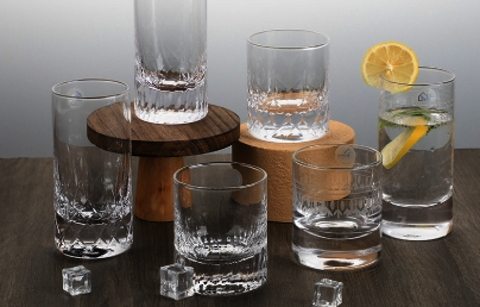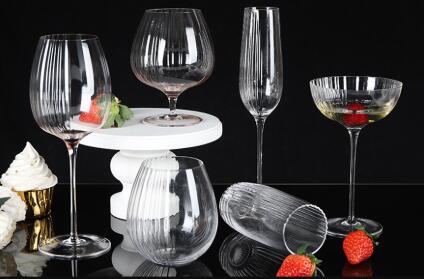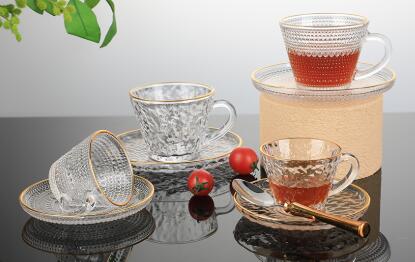Why Does The Soda-Lime Glass Burst with Hot Water
Pulished on Dec. 05, 2018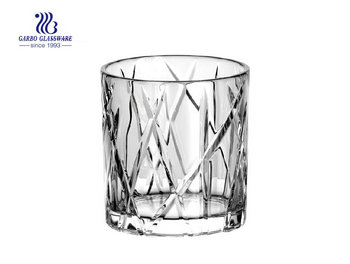 Nowadays, glass is becoming more and more popular among consumers. There are not only polished glass, hot-melt glass, painted glass and other decorative glass, but also various functional glass, such as soundproof and noise-reducing adhesive glass. Insulating glass and insulating fire proof glass, etc. This article will describe the causes of glass cracking and which glass materials are more heat-resistant to help people to see and hear more.
Nowadays, glass is becoming more and more popular among consumers. There are not only polished glass, hot-melt glass, painted glass and other decorative glass, but also various functional glass, such as soundproof and noise-reducing adhesive glass. Insulating glass and insulating fire proof glass, etc. This article will describe the causes of glass cracking and which glass materials are more heat-resistant to help people to see and hear more.
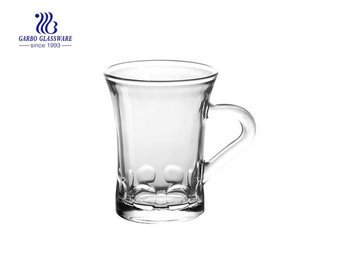 1.Why does the soda-lime glass fry with hot water?
1.Why does the soda-lime glass fry with hot water?
The soda-lime glass burst because of expansion. As soon as hot water is poured into the cup, the inner wall of the cup is heated sharply
Expansion, but the outer wall of the cup remained the same, the inner soda-lime glass suddenly extruded outward, the glass burst. If the cup is heated both inside and outside, and then poured into hot water, the degree of expansion inside and outside the cup is not so large that it will not crack. However, if the glass is thin, even if it is poured into hot water, the heat will soon spread to the outside, so that the soda-lime glass will not break if it expands simultaneously inside and outside. In addition, the so-called hard glass and heat-resistant glass, because the proportion of expansion is not easy to crack.
2.What kind of glass is more heat-resistant?
High borosilicate glass (also known as hard glass) is made by using the conductive property of glass at high temperature and by heating the glass inside to realize glass melting. The linear thermal expansion coefficient is (3.3 ±0.1) × 10 ~ (-6) / K, which is also called "borosilicate glass 3.3". It is a special glass material with low expansion rate, high temperature resistance, high strength, high hardness, high transmittance and high chemical stability. Because of its excellent properties, it is widely used in solar, chemical, pharmaceutical packaging and electric light source. Craft ornaments and other industries. Its good performance has been widely recognized in the world. The field of solar energy is more widely used, Germany, the United States and other developed countries have been more extensive promotion.
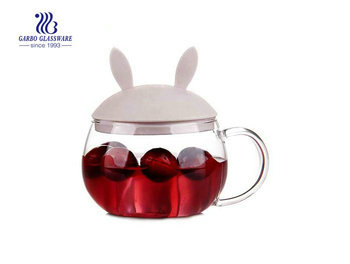 Borosilicate glass has a very low coefficient of thermal expansion, about 1/3 of ordinary glass. This will reduce the effect of temperature gradient stress, and thus has stronger fracture resistance. Because of its very small shape deviation, this makes it a necessary material for telescopes and mirrors. It can also be used to dispose of highly radioactive nuclear waste.
Borosilicate glass has a very low coefficient of thermal expansion, about 1/3 of ordinary glass. This will reduce the effect of temperature gradient stress, and thus has stronger fracture resistance. Because of its very small shape deviation, this makes it a necessary material for telescopes and mirrors. It can also be used to dispose of highly radioactive nuclear waste.
3.Related notion
Armoured glass
Tempered glass (Tempered glass/Reinforced glass) belongs to safety glass. Toughened glass is actually a kind of prestressed glass. In order to improve the strength of glass, chemical or physical methods are usually used to form compressive stress on the surface of glass. Enhance the glass self wind pressure resistance, cold and summer heat, impact, and so on. Notice the difference between FRP and glass fiber reinforced plastic.
Glass
Glass is a kind of amorphous inorganic nonmetallic material, which is usually made from a variety of inorganic minerals (such as quartz, boric acid, barite, barium carbonate, limestone, feldspar, soda, etc.). Its main components are silica and other oxides. The chemical composition of common glass is Na2SiO3,CaSiO3,SiO2 or Na2O CaO 6SiO2. The main composition is silicate compound salt, which is an amorphous solid with irregular structure. Widely used in buildings, used to prevent wind and light transmission, is a mixture. Other oxides mixed with certain metals Or salts and colored glass, or toughened glass made by physical or chemical means. Some transparent plastics, such as polymethyl methacrylate, are sometimes referred to as organic glass.







